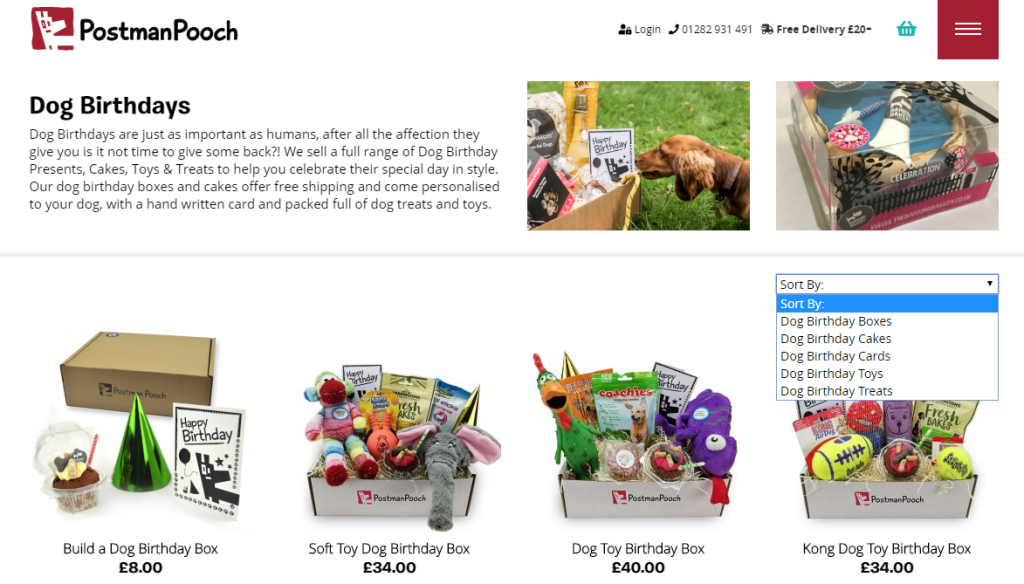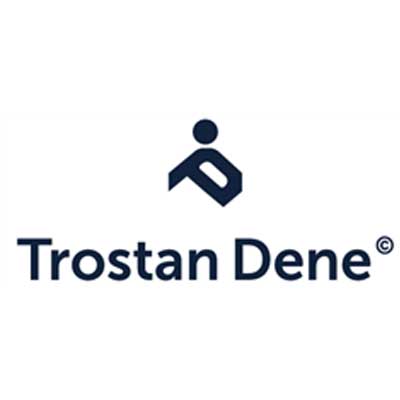If you want to make a great first impression on potential customers, your company’s website should be both user-friendly and beautifully designed. Employing the latest web design trends will help you to attract more visitors to your site and encourage them to explore it further. This could potentially result in additional leads and sales.

Most business owners don’t have time to keep up with all the changes that are happening in the online world. That’s where using a website design agency can pay off! As experts in web design in Manchester, we make sure that we’re aware of everything that’s going on in the industry. This is so that we can design websites that give our clients superb results.
If you’re planning to launch a new website or revamp your existing site this year, which design features and techniques should you be employing? Here are twelve web design trends that are already creating a buzz in 2020.
1. Minimalism

Website user experience (UX) experts have emphasised the importance of using clutter-free designs for many years. With so many of us using small devices, such as smartphones, to access information online, it’s become even more vital to follow these guidelines. The cleaner the site, the more practical it tends to be.
That doesn’t mean that your website shouldn’t contain plenty of content. If you want to ensure that it ranks well in the search engine results pages (SERPs), having a content-rich website is still a must. This also provides visitors with the information that they are looking for. By employing simple navigation options or featuring pages with large images and reduced amounts of text, you could create a stunning site which also meets responsive web design criteria. This can also provide visitors on all platforms with user-friendly experiences.
2. Eye-catching Typography
Keeping things simple doesn’t mean that your website has to lack panache. If you embrace this year’s fashion for over-sized, bold lettering, and unusual fonts; you can create a fresh and stylish design. Using maxi and distinctive typography is a great way to make a statement. Not only this but it also has a practical function; drawing the readers’ eyes to specific areas of the page. You can use this to your advantage to massively improve navigation for the user.
3. Unique Design Features
While your website should always look professional, it’s crucial to give visitors a taste of what’s different about your brand. Using custom illustrations and animations could help you to do just that. The practice is likely to become increasingly popular during 2020, so it’s certainly something you should be considering. That’s if you want to stay ahead of the curve of course.
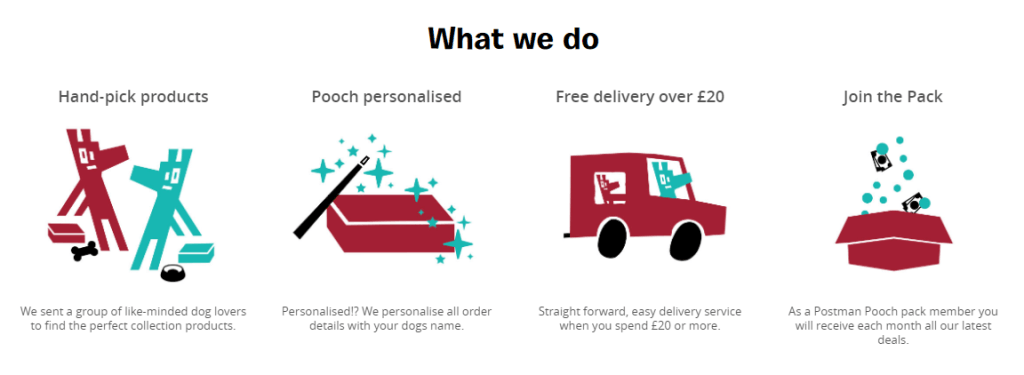
Enhancing photos by adding illustrated elements to them is also a practice that’s on-trend at the moment, and could be a great way of adding some creative flair to your site. Take this from Postman Pooch for an example of a Web Design Illustration.
4. Dark Mode

Dark mode began to take off in 2019, as designers tried to provide visitors to their websites with the ultimate in user-friendly experiences, and it’s set to become even more popular this year. This trend’s origins lie in the fact that web developers often prefer to work on screens with black backgrounds when they’re coding, as this reduces eye strain.
With the general population now spending so much time staring at screens, anything that makes this a more comfortable experience is likely to win fans. This year, designers are also choosing to employ dark mode for aesthetic reasons. Dark backgrounds have been found often to be stylish and can be used with vibrant accent colours to create striking looks.
5. 3D Rendering

While many big brands have been using 3D elements on their websites for some time, 2020 could be the year in which smaller companies are able to utilise these too. Until recently, the cost of using 3D visuals has been prohibitively expensive, but we’re expecting this to change soon.
That could be good news for product design firms and eCommerce website owners in particular. It gives them the option of including 3D models of their wares. Prospective buyers will then be able to see each product from all angles, which may persuade them to make more purchases.
6. Personalised User Experiences
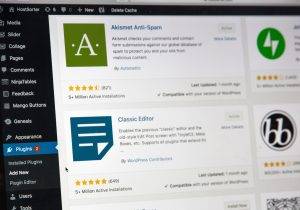
There’s already plenty of evidence out there to show that, when it comes to digital marketing, personalisation can boost results. In fact, according to one report, nearly six out of ten retail consumers admit that personalised marketing messages have noticeably influenced their purchasing decisions. What’s more, we’re becoming increasingly used to experiencing personalised online experiences. With behemoths such as Amazon and Netflix; they deliver content that’s been tailored to suit our individual tastes.
If you’re using WordPress, there are a number of plugins you can use in order to present your website’s visitors with personalised content. We’re WordPress specialists, so we’ll be happy to talk you through your options if you get in touch.
7. Interactivity
Capturing your visitors’ attention is a must if you want to engage with them effectively. It’s not surprising that the use of interactive elements is set to grow this year. Even adding simple polls and surveys, interactive maps, or a choice of content options to your website can help you to build relationships with potential and existing customers. This, of course, could lead to them buying your products or services.
Gamification of content is also likely to grow in 2020. By adding game-like features to your website, you can create a user experience that keeps your customers coming back. The use of augmented reality (AR) to allow consumers to see how products would look in their homes, or whether certain clothes or make-up items would suit them, for example, is also expected to continue to be popular.
8. Video and Audio Content
The use of video and audio content on websites has been on trend for a number of years and is unlikely to go out of style any time soon. Not only can you use it to attract people to your website, but you can also utilise it to engage with them while they’re there. You can use it to inform people about products or services, to tell the story of your brand. You can also use it to position staff members as thought leaders within your industry.
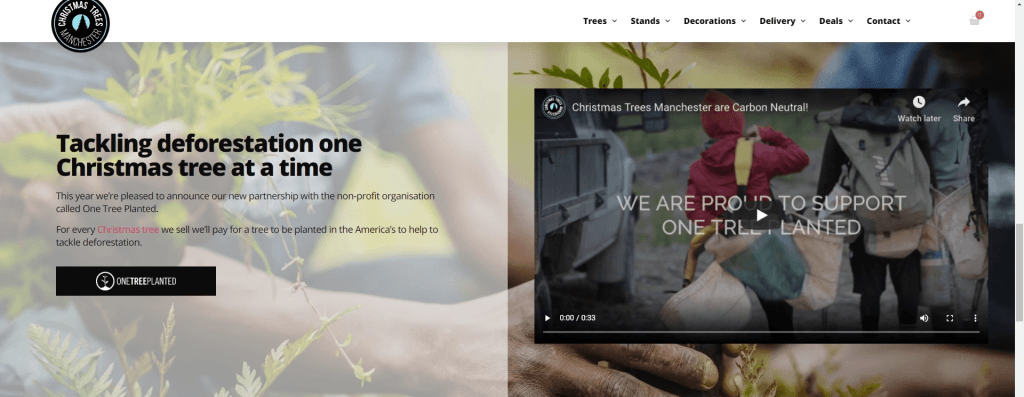
Interactive webinars, live streams of big events, and podcasts are all likely to become more popular as brands seek to connect with and retain, tech-savvy clients. 360-degree videos and content featuring virtual or augmented reality should also continue to be in vogue this year. This is as companies are attempting to provide potential customers with a more immersive experience and increase sales.
9. Website Chatbots
With the global market size for chatbots predicted by Global Market Insights to reach a whopping $1.3 billion by 2024, more UK businesses will definitely be adding them to their websites this year. In years gone by, conversing with a chatbot could often be a frustrating experience. Developers are now using artificial intelligence (AI) and, in particular, machine learning, to ensure that today’s bots can deliver the high-quality, responsive service that website visitors are looking for.

Customers can receive prompt answers from chatbots, saving them the trouble of having to trawl through your website. This also saves them from having to contact your company to obtain the information they require. It could lead your business to more sales. You could also minimise your costs by using them, as you won’t need to employ as many customer services staff to handle basic queries. You can even programme them to recommend products or services to customers at appropriate points in the conversation, potentially allowing you to upsell or cross-sell more. What’s more, you can use the data obtained by them to improve your sales and marketing plans, driving your business forward.
10. Voice User Interfaces

According to a recent UK government report, around one-fifth of UK households now have at least one smart speaker, such as an Amazon Echo or Google Home. Many of us also regularly use voice assistants, such as Siri, to perform tasks and access information on our smartphones. As a result, it’s becoming crucial to incorporate voice user interfaces (VUIs) on websites in order to meet voice search users’ needs. That means we’re likely to see a boom in websites that can communicate simply. This has the power to give concise information to visitors by way of voice interactions.
VUIs don’t work according to the same principles as traditional graphical user interfaces (GUIs). These are the systems of visual components, such as buttons, icons and windows, that comprise websites. You’ll need to know exactly what’s required before adding one. It’s also important to ensure that your site’s GUI works seamlessly with your VUI to obtain the best results. Therefore, if you want to embrace this trend, make sure you work closely with a specialist website design agency.
11. Customer-Driven Content
Today’s website visitors want to find the information that they’re looking for quickly. People don’t want to be overloaded with content that’s not directly relevant to them. Therefore, 2020 will see more focus on content strategies that are driven by customers’ needs. We’re likely to see fewer website owners using a scattergun approach to content creation. We are also likely to see more tracking when it comes to customers’ buying journeys; this is so that they can include relevant content at each stage of the sales process.

If you want to implement this type of strategy, your website should be well-structure. This is so that both prospective customers and search engine spiders’ can find each piece of content with ease. That’s where the pillar post and topic cluster model could come into its own. It’s likely that blogs, white papers, and e-books will still play significant roles in most firms’ content marketing strategies as these can be used to provide key messages and demonstrate their industry expertise.
12. Increased Accessibility

It’s already a legal requirement for UK businesses to ensure that their websites are as accessible for people with disabilities as they are for people without them. Many companies are also finally recognising the importance of engaging with their disabled customers. In 2020, accessibility is, therefore, likely to become a hot topic for digital marketers and web designers across the nation.
According to figures from Scope, there are approximately 13.9 million people with disabilities in the United Kingdom – that’s more than one-fifth of the population. Therefore, you could be alienating a significant number of people if they aren’t able to access the content on your site. Failing to ensure that your site is accessible could cause damage to your brand’s reputation. You could also lose out on potential sales.
According to experts, businesses miss out on securing around £2 billion per month by failing to meet disabled people’s requirements. Making sure that your website is designed with disabled users in mind is essential if you want your business to thrive.
The Next Steps
If you’re looking for a company specialising in web design in Manchester, you’ve come to the right place. Our knowledgeable team can help you to create a website that incorporates the latest trends in order to give your brand a competitive edge. To find out more about our services and discuss your project in more detail, just contact us.

